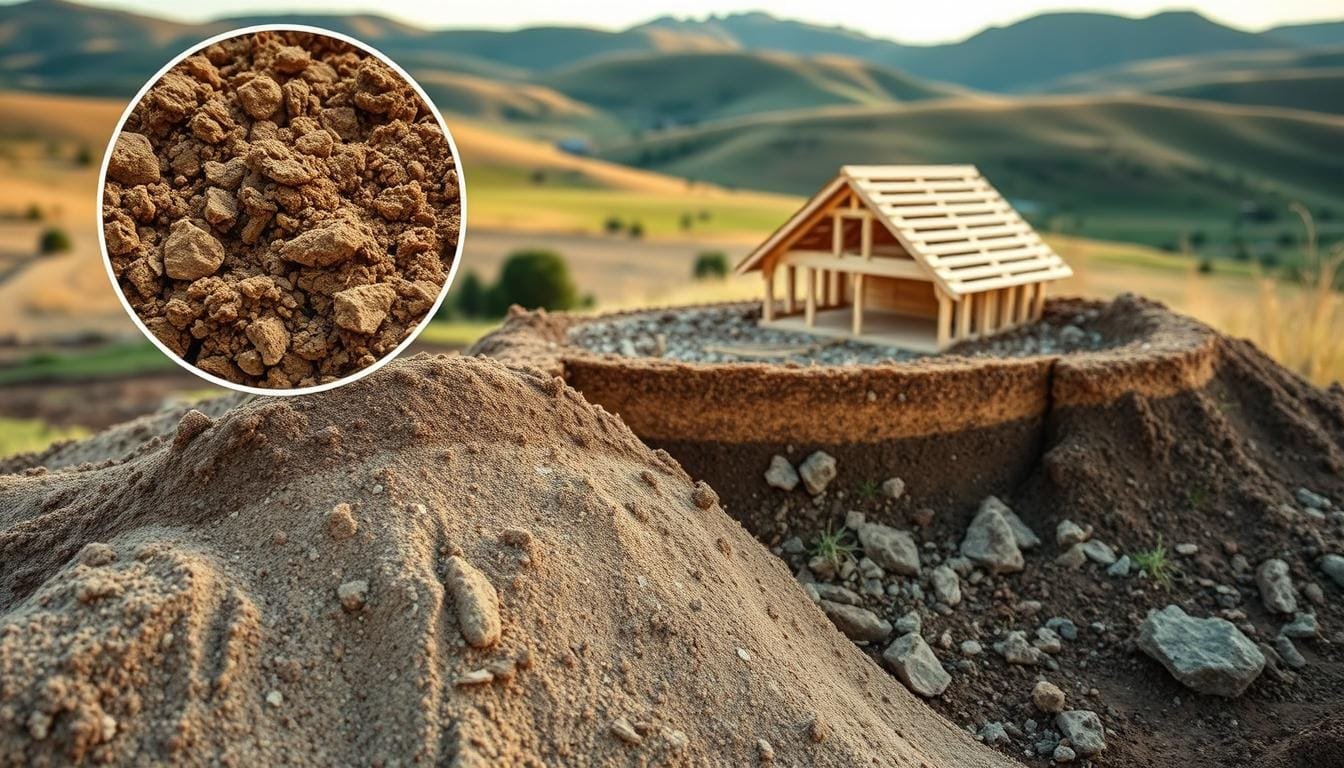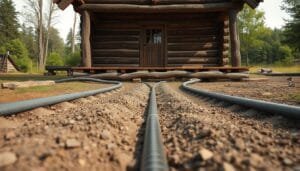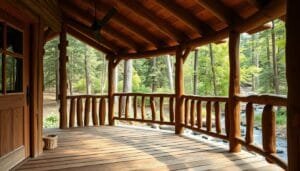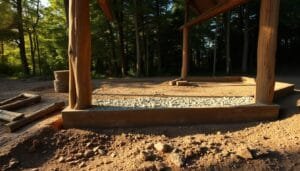Did you know clay soils have more than 40% clay particles? This leads to poor drainage. Soil composition is key for a cabin’s foundation stability. Whether it’s a cozy retreat or a spacious lodge, knowing the right soil is essential.
Choosing the right soil for your cabin’s foundation is important. It’s not just about digging a hole. Each soil type, from clay to sand to rock, has its own challenges and benefits.
In this guide, we’ll look at how soil affects cabin foundation stability. We’ll dive into clay, sand, and rock’s characteristics. This will help you choose the best soil for your cabin. So, grab your shovel and let’s find out which soil is best for your cabin’s foundation!
Understanding Soil Types for Cabin Foundations
Choosing the right soil for your cabin foundation is key. Different soils have their own challenges and perks. Let’s look at clay, sandy, and rock soils to guide your choice.
Clay Soil: Sticky and Expansive
Clay soil is sticky and expands when wet. It holds water, causing it to swell and shrink. But, when dry and packed, it can support your cabin well.
Sand Soil: Well-Draining but Less Stable
Sandy soil drains water well and is easy to dig. It’s good for cold areas because it doesn’t heave much. But, it’s not as stable as other soils. Using the right foundation methods is key for stability on sandy soil.
Rock Foundations: Solid but Challenging
Rock foundations are very stable and can hold a lot of weight. They’re great for big buildings and wet areas. They settle little and resist erosion well. But, digging into rock is hard and expensive.
| Soil Type | Stability | Drainage | Excavation Ease |
|---|---|---|---|
| Clay | Medium | Poor | Medium |
| Sand | Low | Excellent | Easy |
| Rock | High | Variable | Difficult |
Knowing about these soils helps pick the best foundation for your cabin. Think about your local weather, water level, and building size when deciding.
Soil Drainage Considerations
When building a cabin, knowing about soil drainage is key for foundation water management. Different soils handle moisture in different ways. This affects your cabin’s stability and how long it lasts.
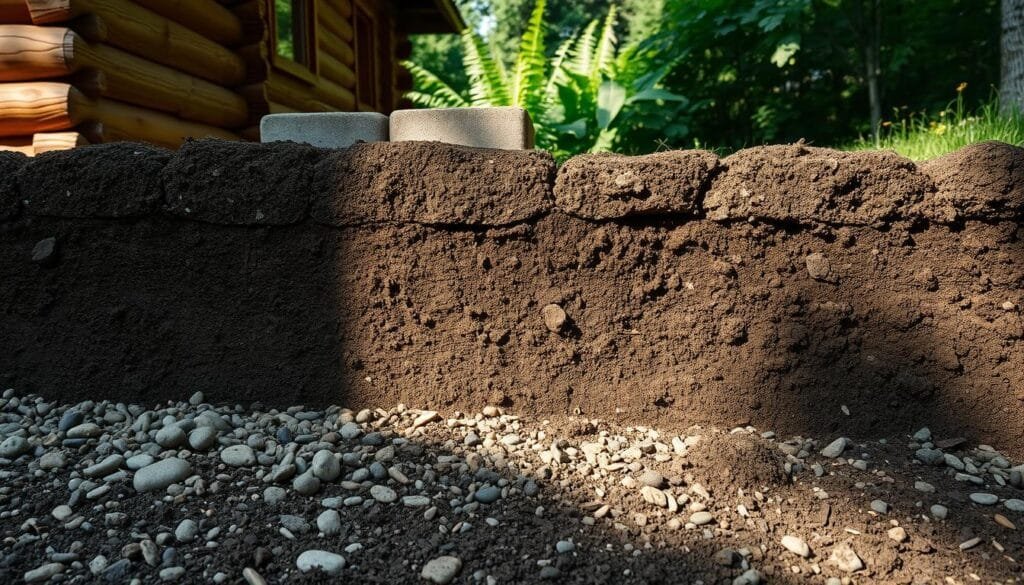
Clay Soil Drainage
Clay soils, with more than 40% clay, are hard to drain. They don’t let water through well, causing water to gather near your cabin. To help, add organic matter. About 16 cubic yards of compost can make clay soil better.
Sandy Soil Drainage
Sandy soils drain well because they let water pass through easily. Their high permeability makes them good at moving water away from your cabin’s base.
Rock Foundations and Drainage
Rock foundations have their own drainage issues. Even though rock is stable, you might need extra ways to drain water. A good drainage plan is vital to keep moisture away and protect your cabin.
| Soil Type | Drainage Characteristic | Soil Drainage Impact |
|---|---|---|
| Clay | Poor | High risk of water accumulation |
| Sand | Good | Natural water flow away from foundation |
| Rock | Variable | May require additional drainage solutions |
Good soil drainage is essential for a stable cabin foundation. The Building Code says buildings must be sloped to keep water away. To manage water well, slope your landscaping at least 3 meters away from your cabin.
Soil Compaction and Stability
Soil compaction is key for a stable cabin foundation. It helps avoid costly repairs by preventing settlement. We’ll look at why compaction matters and which soils are best for your cabin’s base.
Importance of Compaction for Stability
Compaction makes soil denser, creating a strong base for your cabin. The right compaction method depends on the soil type. For clay, a pad-foot roller works well. Sand, on the other hand, is best with vibratory rollers.
The soil should be moldable but break when dropped. This is the ideal moisture level for compaction.
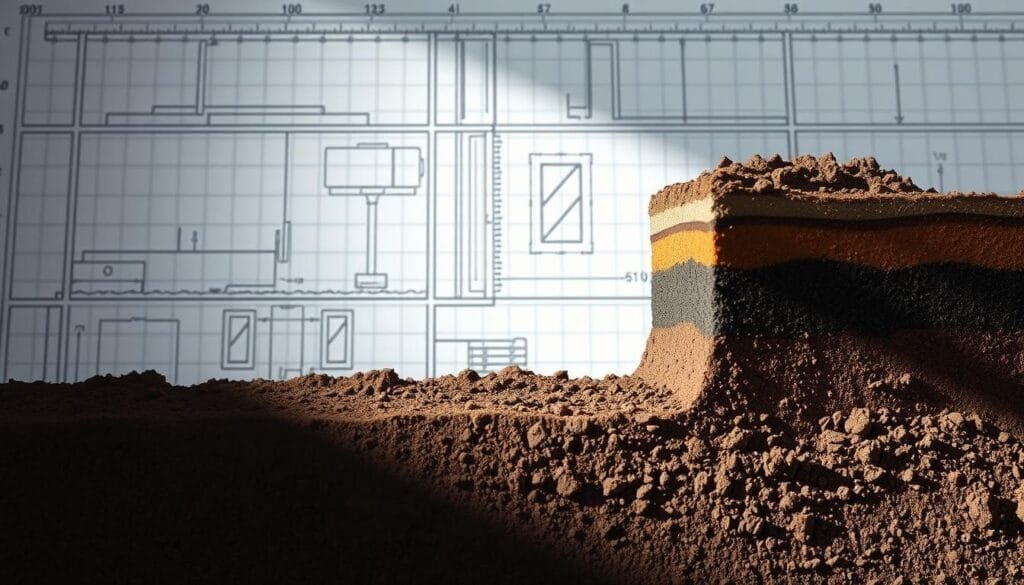
Soil Types and Stability
Clay is the top choice for compaction due to its density. Sand is compactable but drains water quickly. Silty soil can be compacted but holds moisture well.
Here’s a quick look at how different soils compare in stability:
| Soil Type | Compactability | Stability | Drainage |
|---|---|---|---|
| Clay | Excellent | High | Poor |
| Sand | Good | Moderate | Excellent |
| Silt | Fair | Low | Fair |
| Rock | N/A | Very High | Variable |
Too much compaction can harm soil density and wear out machines. For the best results, hire experts in soil compaction and foundation stability. They’ll make sure your cabin’s foundation is solid, lasting, and worry-free.
Environmental Factors
The environment greatly affects your cabin’s foundation. Climate, erosion, and soil changes can impact its stability. Knowing these factors helps in preventing soil erosion and keeping your foundation strong.
Climate Effects
Different climates have unique effects on foundations. In cold areas, freezing can push foundations up by a lot. This can cause buildings to shift significantly.
Erosion Risk
Erosion is a big threat to foundations. In some areas, soil loss is over a foot in decades. It’s important to prevent soil erosion to protect your foundation.
Seasonal Soil Changes
Seasons change how soil behaves. In winter, freezing water can push foundations up. This can cause buildings to move a lot. It’s key to maintain your foundation through the seasons.
| Soil Type | Behavior in Wet Seasons | Behavior in Dry Seasons |
|---|---|---|
| Clay | Expands, poor drainage | Contracts, may crack |
| Sand | Good drainage, stable | Prone to erosion |
| Rock | Stable, minimal changes | Stable, minimal changes |
To fight environmental impacts, create a 2% slope away from your cabin. Also, using strong materials like concrete can help your foundation stay strong.
Testing Soil Before Building
Before starting your cabin project, it’s key to test the soil. This step is essential for a solid foundation. Professional tests can uncover important details about the ground beneath.
There are many soil testing methods out there. Standard Penetration Tests (SPT) check soil density. Cone Penetrometer Testing (CPT) gives detailed results quickly. These tests help figure out how well the soil can hold weight and how wet it is.
Soil types, like clay, can change a lot depending on moisture. This affects how you build your cabin. Testing the soil might seem like an extra cost, but it’s worth it. It helps avoid costly errors and ensures your cabin lasts long.
